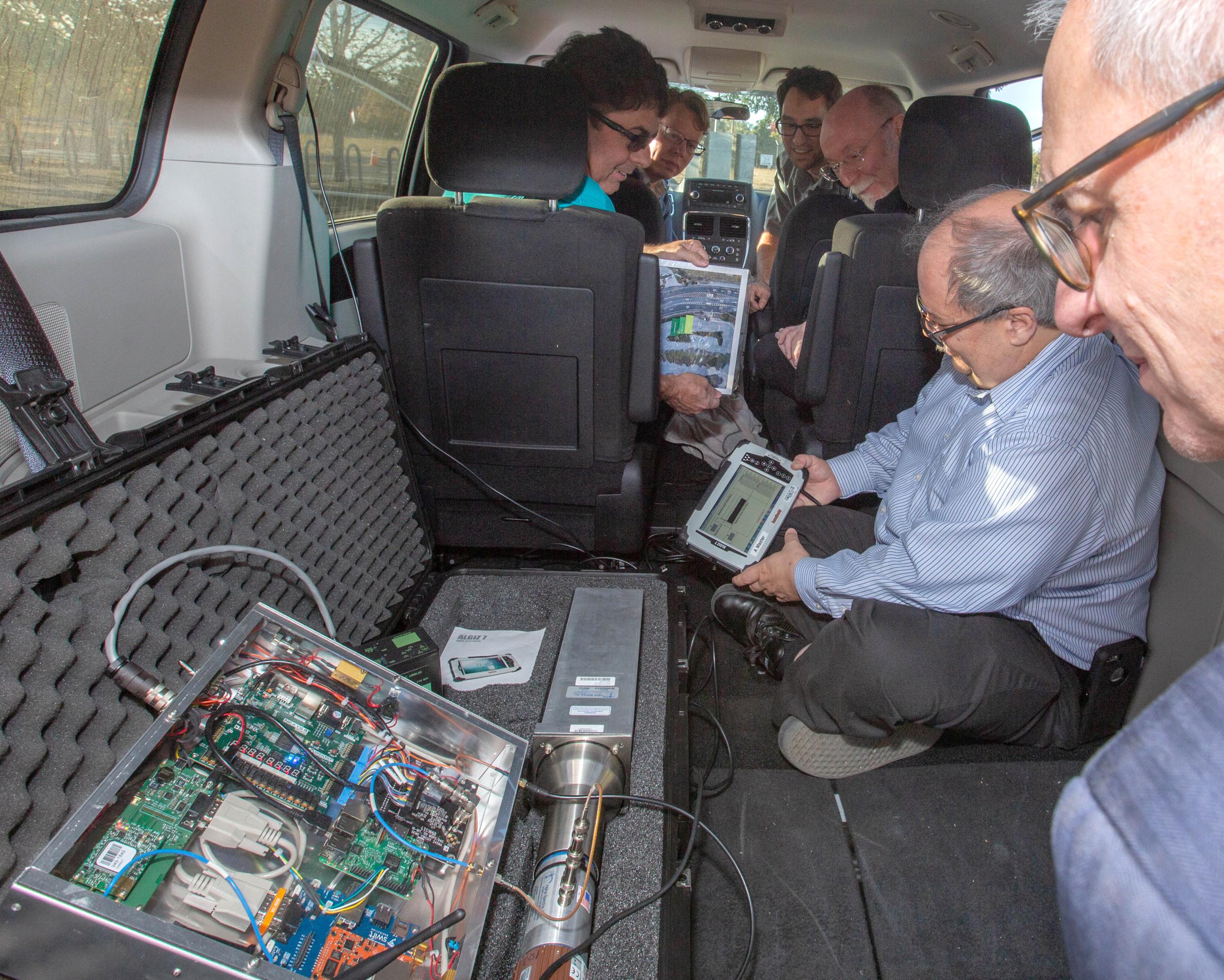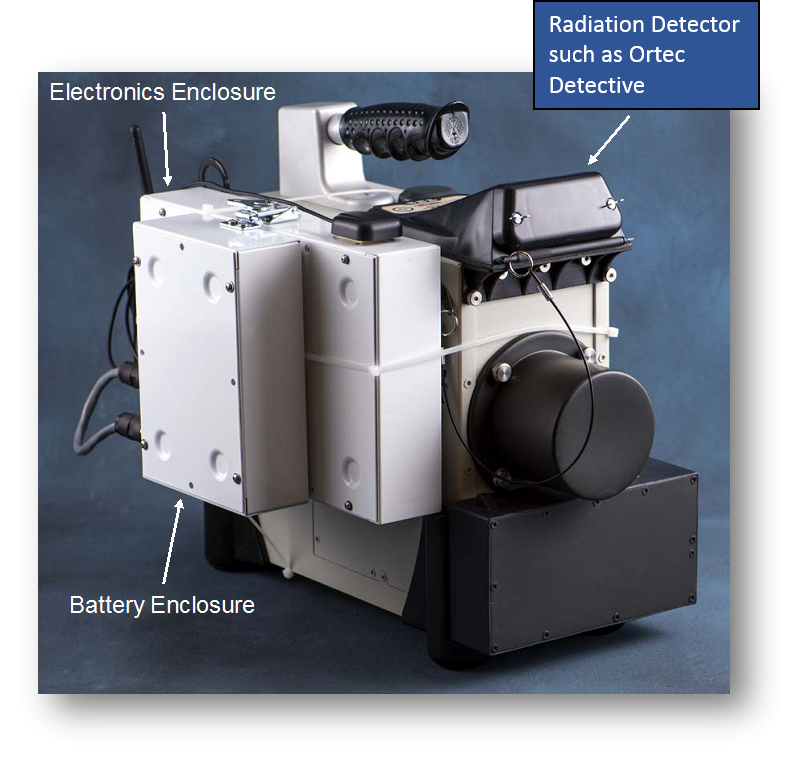The United States Government and many state and local agencies have spent billions of dollars fielding radiation detection equipment at borders, ports, and in cities to protect against attempts at radiological or nuclear terrorism or to prepare for the potential life-saving response needed in the aftermath, should such an attack occur. Such training is inadequate because it does not allow for the simultaneous use of their actual radiation detection gear, against scenarios of most concern. Training for scenarios that include high-hazard-level radiation sources such as Radiological Dispersal or Exposure Devices (RDD, RED, respectively), or wide-area contamination. limited because of the unwanted radiation dose, cost, safety, security (especially for special nuclear materials, SNM), as well as licensing and shipping requirements associated with their use. No current training methods provide the fully realistic experience to the user dealing with actual hazard-level RDD/RED sources or SNM in field operations with realistic radiation detection physics in the neighborhoods and borders where responders are expected to be prepared to face such possibilities. Use of small radioactive sources or virtual trainers have fundamental limitations that provide less than adequate training for responders.
In order to address such limitations LLNL has developed RaFTS, an externally mounted device that directly interfaces with the circuitry of operational radiation detection systems. With RaFTS, trainees’ detectors respond on their own instruments to radiation levels that are dependent on their physical location relative to a pre-determined scenario. The outputs produced by RaFTS are of a quality that the detection instrument behaves as it would with real radioactivity, producing spectra on the detector that can be analyzed, andradiation intensity levels that realisticly depend on the detector’s location, without the presence of any radiation sources. Detectors behave as they would in real life, even including out-of-range responses, if so enabled. The physics of the radiation detection process is absolutely maintained including time and location varying responses, statistical randomness, etc. These same phenomena are observed when measuring real radiation sources. .
There are three main components to the RaFTS system: 1) the radiation detector, which can be of any type and from any manufacturer; 2) the RaFTS electronics, which produce the electronic pulses that are injected into the electronics of the radiation detector through a (to be) standardized port interface; and 3) the exercise scenario, which defines the synthetic radiation field and time-varying radioactivity concentrations/signal rates throughout the exercise area. The result is the detector system responds as if real sources are present and located at specific locations or are dispersed over specific areas in the training exercise. As a function of the distance between the detector and those simulated source locations, the RaFTS’s signal injection rate adjusts according to realistic physics. The training area can be of any size.
The radiation detector can be of any type and from any manufacturer. The RaFTS system requires simple modifications to the radiation detector: a connection between the actual radiation detection component of the detector, e.g., the high-purity germanium (HPGe) crystal, the phototube, or other detector material, and the electronics of radiation detector, with a wire running to a port located on the outside of the housing surrounding the radiation detector. The RaFTS simply replaces the detector material as the input to the electronics of the radiation detector. Thus, all the output measurements (count rates, spectra, and evaluated data) of the detector function as if a real source were present.
The picture shows an Ortec HPGe detector with an early version of the RaFTS equipment attached. The incremental weight of the RaFTS including the batteries is 1.5 lbs, while the HPGe detector weight is approximately 25 lbs. The final RaFTS system is expected to be approximately the size and weight of a large cell phone. We have also demonstrated a modifying a hand-held NaI-based detector functioning with the RaFTS system. The NaI detectors are smaller and lighter than the HPGe detectors and will provide key dimensions for the planned miniaturization of the RaFTS.
- Interfaces directly with all radiation detection equipment thus elevating the capability of the entire industry and community of users, touching almost every law enforcement, fire and other emergency response team across the nation.
- Plays out simulations in first responder's expected area of responsibility, adding to realism of the practice and reducing cost of exercises and eliminating the need to travel to specialized facilities.
- Improves the fidelity of training and practice for in extremely dangerous scenarios.
- Eliminates the cost of source transportation, staffing, and licensing.
- Ultra-realistic interaction with the responder's own field equipment.
- Removable mounting allows an instrument to be used in a real radiological incident.
- Allows practice against a wide range of source types and radioactivity levels while completely eliminating the limitations on source type or activity levels.
- Provides simulation of any materials including those with high radiation outputs.
- Simulates distributed sources of these materials.
- Simplifies the preparation of training exercises involving multiple types of hazards such as chemical, biological and even seismic.
This technology was originally developed to enhance the level of radiation detection training. It can also be applied to training activities in other monitoring and emergency response fields such as training for chemical and biological dispersal and can also extend to simulation of seismic events which are used by the Comprehensive Test Ban Organization during its field exercises.
LLNL has held demonstrations of the RaFTS hardware interfaced with HPGe detectors as well as NaI based detectors. The RaFTS hardware is intended to be 'standardized' so that one design is the same for both types of detectors. The remaining efforts to make this a commercial product are 1) to miniaturize the RaFTS components, and, 2) to collaborate with detector manufacturers on how best to interface their detectors with the RaFTS hardware, i.e., the technical details such as connections between the radiation detector electronics or location and form of the attachment point of the RaFTS hardware.
LLNL has a published U.S. patent application for its RaFTS technology, Emergency Response Scenario Simulators and Simulation Techniques.




